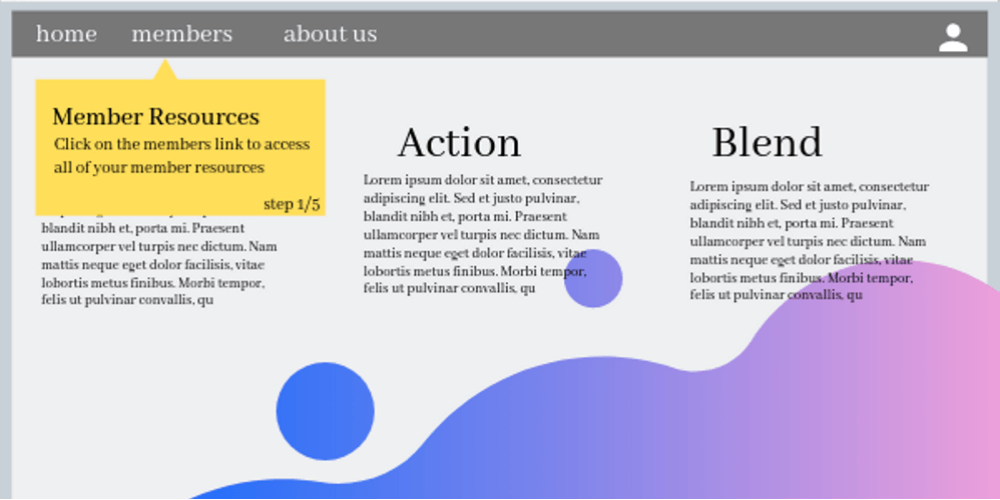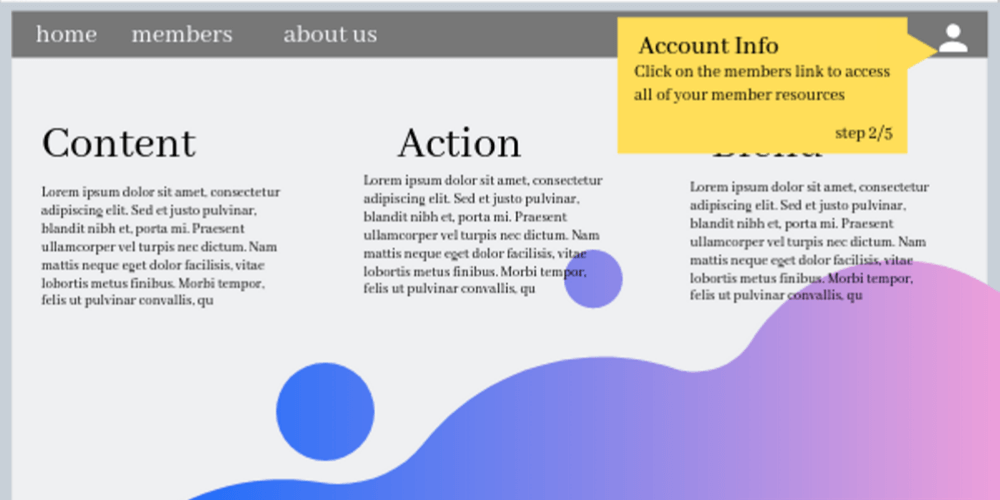When a membership site launches, it needs to attract new members to grow a member base. This member base is what will sustain the membership site. Depending on your membership model, you may attract members all year long or only at certain times.
However, the fact remains the same: at some point in your membership’s life, you will want to grow your member base. And when you do, you need to have a good onboarding process to get new members oriented.
Without an onboarding process, your new members will be left in the wind, potentially disoriented and confused. And confused members are usually only one step away from unsubscribing.
Onboarding is one of the most important stages in the member lifecycle, so it’s important to put effort into the process.
So how do you create an onboarding process that will show your new members the ropes and deter confusion? Read on, and we’ll tell you.
Choose Your Type of Onboarding Process
The first step to a successful membership onboarding process is to choose an onboarding method. There are various ways you can onboard your new members. Many people use email, but you can also use interactive site tours, videos, explanation pages, or a combination thereof!
Onboarding Emails Email onboarding is a common way to onboard new members. Its popularity may stem from it being relatively simple to set up. You can use an email marketing service like MailChimp or ConvertKit, to set up an automated email series. Once a new member is added, they will immediately begin receiving onboarding emails.
One advantage to email onboarding is that it gives you the ability to space out emails. This delay can help members digest the onboarding process slowly, which can save you from overwhelming them with too much information.
However, email onboarding alone isn’t without disadvantages. If members want to get started right away, waiting around for an email series will be frustrating. Members may also disregard your emails, which could cause them to miss out on important information.
Because of this, it may be a good idea to combine onboarding methods. The email series can offer tidbits of onboarding information and reminders, while another onboarding method, like video or an explanation page, allows members to jump right in.
Onboarding Pages
You can also utilize an explanation page as part of your onboarding process. An onboarding page is just a webpage that holds all of the onboarding material. Think of it as a list of resources or tutorials to help the user navigate your offering. It’s is a great option to pair with the email onboarding method. Plus, existing members can also refer back to this page for information.
Onboarding Videos
Videos are an excellent way to introduce your members to your offering. While email and page onboarding methods can make use of screenshots, videos can show members where and how to navigate your site.
Videos are also less overwhelming than an entire page of text, so it can be a great alternative to the onboarding page. However, video creation processes can be time-consuming, so be prepared to sink some time into it.
And onboarding isn’t the only way to use videos on your membership site either. Here are some great free tools you can use to create videos.
Free Screen Recording Software
Interactive Onboarding
Interactive onboarding is an effective method for teaching users how to use your offering. However, it may require more technical know-how, depending on the implementation you choose.
Interactive onboarding will force the new member to complete steps around your site before allowing them to explore. This is usually done with site overlays that can point out important aspects of your website and give quick snippets of information.

This method is useful because it physically shows the member where everything is. It also forces members to pay attention to it (if they want the freedom to explore your site). These interactive overlays are prone to using small callouts, so the written text is often easy-to-digest snippets, which can help keep members from being overwhelmed.

Onboarding Process Components
Once you have chosen your onboarding method, you may be wondering what you should include. An excellent place to start is to ask yourself what information a person might need if they are entirely new to your offering and membership site.
We’ve added some common elements to highlight during the onboarding process below. While not an exhaustive list, these items are commonly included.
Account Information
Make sure you show your new members how to set up their membership profile and where to go to access their account settings.
Content
You should also direct your members to your content, ideally one of your most popular pieces. You want to get them involved and interested in your offering so that they keep coming back for more.
Offering Features
If you have any essential membership features, make sure you point them out. This can be anything from your membership community to a feedback survey. If there is anything you would like members to know about or investigate, point it out - especially features that might not be immediately obvious.
Best Practices
So, you have an onboarding method and some items you want to include. Great! Now, how do you put together these elements without falling into the common pitfalls, like information overload or confusion?
Troubleshoot
This might be a no-brainer, but make sure you troubleshoot your onboarding process. Nothing is more frustrating to new members than technical difficulties. So make sure you have all of the kinks ironed out before launching your new onboarding process.
Make Things Clear
You are going to hear this over and over and over here, on other blogs, and as a general rule: make things absolutely, sparkling clear to your members. Confusion breeds discontent and, ultimately, unsubscribes. So you want to make sure readers know what is going on at all times.
But this is easier said than done. So where do you start?
Consider your Audience
Communication can be tricky, especially since members can come from all walks of life and have different experiences with technology. Some people may be able to figure out complicated sites quickly, while others may not know where to begin.
We recommend you consider the understanding level of your average user. For example, if you have a membership site that targets grade school teachers, you may want to include more hand-holding than you would if for an audience of software engineers.

Choose Your Words
When clarity is critical, make sure that you choose your words carefully. This especially holds true if you are using an onboarding method that relies heavily on written word.
It’s easy to write something. It’s harder to write something that everyone will understand. After you have written some content, a good practice is to leave it for a period of time and focus on something unrelated. After a few hours or days, return and reread it. Bonus points if you read it out loud. By rereading, you’ll be able to pick out problem passages and potentially confusing portions you may not have noticed before.
While not a fun process, it can significantly increase the clarity of your work, which will help your new members in the long run.
Get Members Involved
During your onboarding process, ask for member feedback! This is one sure-fire way to get members unabashed opinion while the process is still fresh in their mind.
While it can be terrifying (and even a little demoralizing) to get feedback from your members, trust us - it’s worth the pain. Armed with member feedback, you will be able to tackle the problem spots in your onboarding process and turn it into the onboarding experience your members want.
Now, keep in mind that not every piece of feedback will be a gem. You may even receive conflicting requests. When this happens, use your best judgment. When not sure, get a second opinion or wait for more feedback. It’s not a cure-all to onboarding problems, but it can definitely help give you ideas for improvement.
Establish Your Offering’s Value
People like to feel good about their purchases, so the onboarding process is an excellent opportunity to make people feel like they are getting a terrific return for their investment.
You can do this by highlighting all the things they are getting. It doesn’t have to be a long, drawn-out process either. It can be a simple checklist that makes it look like they just got a bargain. Only X a month for all this content? What a great deal!
Just getting started and trying to figure out what your offering is worth? You can check out our article about choosing membership site pricing (with bonus information about how to convert website visitors).
After It’s Built
Building a great onboarding process doesn’t stop after it’s built. You should keep an eye on it as your membership site grows. If you add new features or make site changes, be sure to check back and make sure it’s up to date.
If you implemented a feedback feature in the process, check the feedback occasionally, and look for trends. If you have received a lot of complaints about a specific portion of the process, you may want to think about updating it.
Investing the work to create a stellar onboarding experience for your members can save you time (and members!) in the long run.